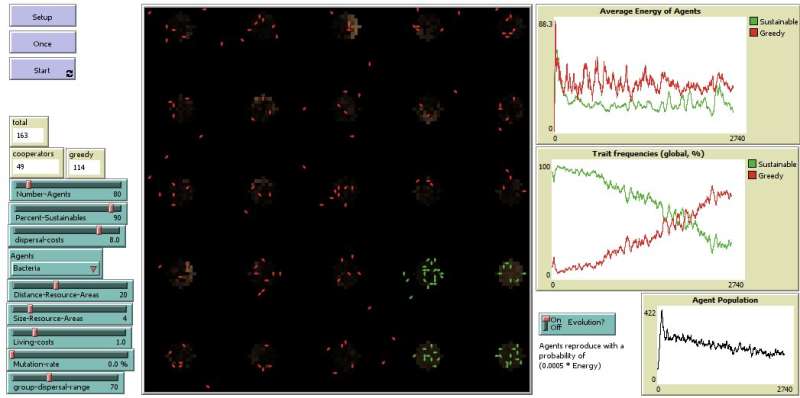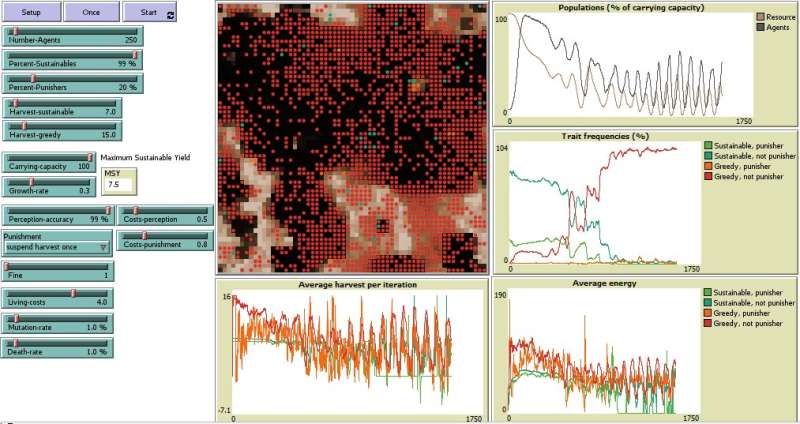November 21, 2022 dialog
New hope for novel therapies has emerged from computational models

In the war between good and evil, I was there seeking to design powerful selfish strategies for investigating the defense mechanisms of cooperators. Surprisingly, the results serve a different domain of science. It gave me the hope to develop novel therapies using selfish strains as traitors betray their original species in favor of us. They commit treason inside cancer and microbial pathogen populations that usually resist traditional drugs, and destroy these harmful populations and drive them to go extinct. In a nutshell, I recruited villains to do something good.
Unlikely beginning
From an unlikely beginning, I took on the task of finding new treatments. The story began when I attempted to better understand how massive cooperative behavior evolved in populations of the living world under natural conditions in which selfishness was the only way to survive.
Since Darwin's time, the problem of cooperation has preoccupied evolutionary biologists.
How can cooperative behavior evolve and persist within the selfish natural world? This is "the most important unanswered question in evolutionary biology," according to Lord Robert May.
Why does cooperation matter?
Cooperation is fundamental not only for social insects, as you may think, but also for humans, bacteria, viruses, cancer cells, and every living organism. However, it is inherently prone to exploitation by cheats or defective free riders, who reap the highest profit without paying their share. Therefore, they invest more in proliferation than cooperators. Consequently, their numbers rise and take over the population.
However, the realm of living organisms is still here despite the infinite attacks of cheats. Evolutionary biologists explain this phenomenon by suggesting mechanisms that promote cooperation against cheats as kin selection, punishment, multilevel selection, and spatial structure.
Computational models
I created agent-based simulation models to examine the substantial promoting mechanisms—the ones that have already been mentioned above—against some specific selfish strategies I designed and coined "conditional defector strategies."
The conditional defector strategies were frequently dominant in the computational experiments, as they could outcompete the cooperating majority, which in turn declares the failure of the most crucial promoting mechanisms of cooperation.
"Therefore, it can be said that maintaining cooperation may be far harder than previously thought," the study says.

Although the new insights revive a long-standing puzzle in evolution theory, they also pave the way for a new therapy for incurable diseases.
The study said, "Conditional defectors can be used as suicidal agents to drive the population of pathogens into self-destruction." From an evolutionary point of view, we can consider tumors or microbes as cooperating populations. They are clusters of cells wherein each cell incurs costly actions to produce essential substances in favor of all. They resist cheats by the mentioned defense mechanisms.
However, conditional defectors can violate these mechanisms and outcompete natural cooperating strains. Ultimately, the entire population would die, as the selfish agents could not last after the extinction of cooperators due to the lack of the necessary collective actions, which is a phenomenon known as the tragedy of the commons.
Creating the tragedy of the commons within pathogen populations means healing many uncontrolled incurable diseases.
What are conditional defector strategies?
The conditional defector strategy may be any cheating strategy that could occasionally cooperate, such as cooperating in some behaviors and cheating in others, or incurring additional costs to reap a group advantage even though still selfish in other behaviors. For instance:
1. Cooperate for spread
The fundamental problem of ordinary cheaters is that they cannot arrange successful migrations. Therefore, their patches rapidly go to extinction. However, the conditional defection strategy can avoid this problem, as they cooperate only for the spread. They only share migration costs to decrease the portion of each participant. Hence, the conditional defectors have a high dispersal rate with the lowest possible price. Consequently, they could escape the local extinction threat. (Fig. 1.)
2. Pay for the escape
"Conditional defectors can pay some of their wealth or waste some profits to escape punishment," the study says. For example, some individuals produce substances to mislead punishers, or possess a significant tag that marks cooperators to escape punishment. Therefore, conditional defectors can safely merge within the cooperator's populations without consequences. (Fig. 2.)
The idea of using cheaters to attack pathogens as a cooperator population is not new; many papers have suggested similar ideas previously. However, cooperators' defense mechanisms are always a major obstacle. Now, conditional defector strategies can surpass these obstacles to provide promising therapeutic applications.
This story is part of Science X Dialog, where researchers can report findings from their published research articles. Visit this page for information about ScienceX Dialog and how to participate.
More information: Ahmed M. Ibrahim, The conditional defector strategies can violate the most crucial supporting mechanisms of cooperation, Scientific Reports (2022). DOI: 10.1038/s41598-022-18797-2
Journal information: Scientific Reports
Ahmed Ibrahim: www.researchgate.net/profile/Ahmed-Ibrahim-97



















